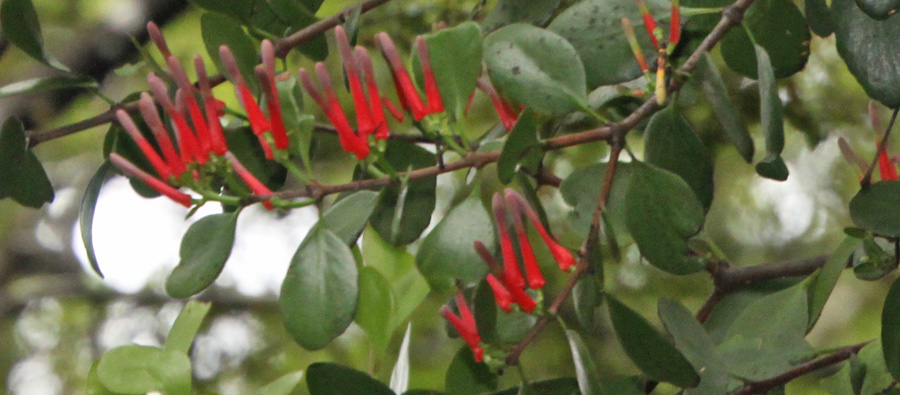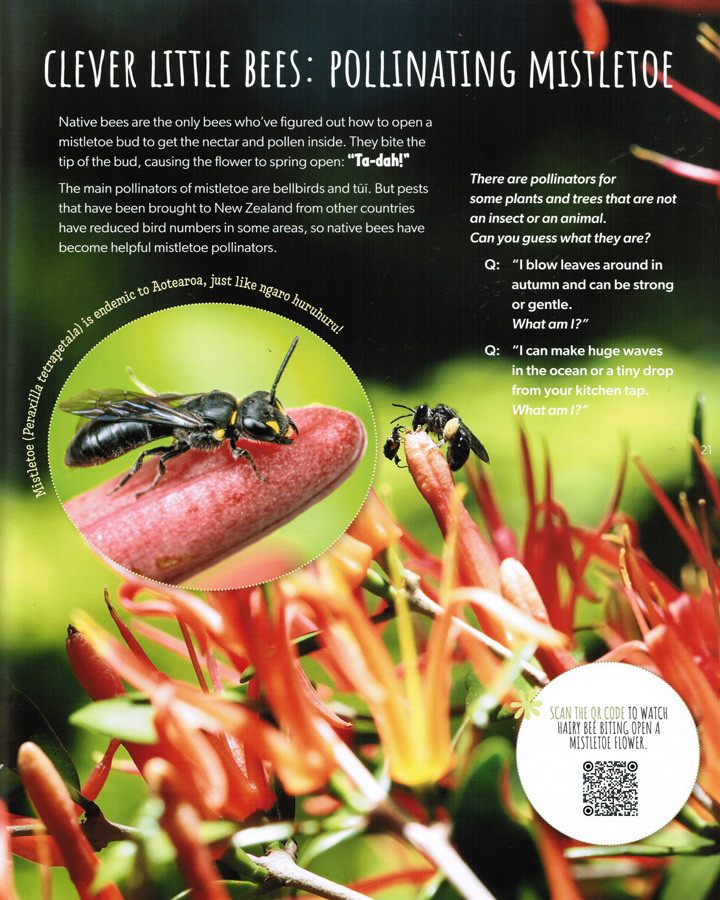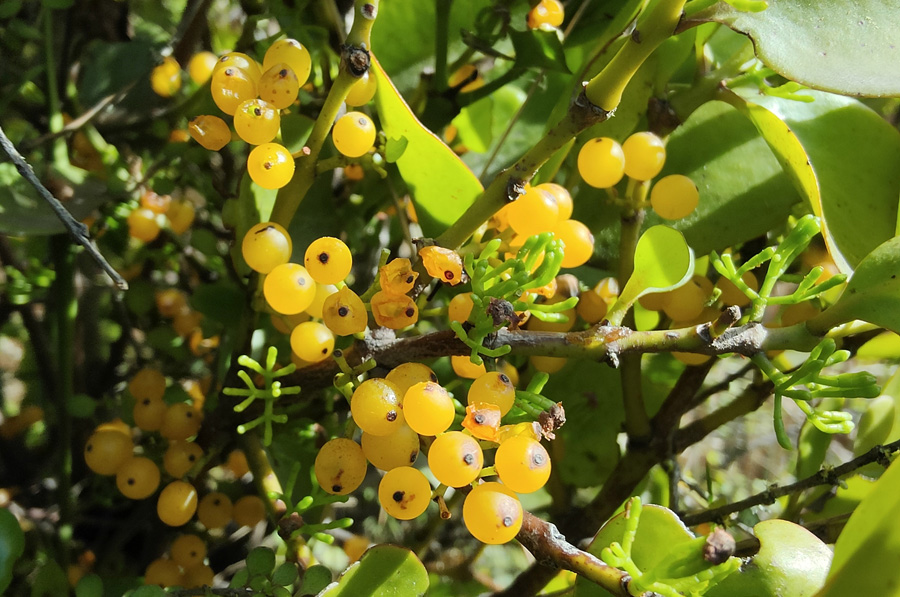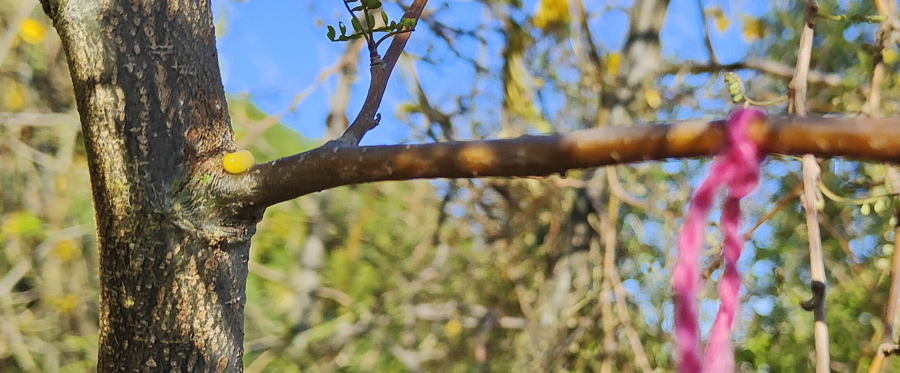Follow
the podcast on


A week or so ago, a wonderful kids book couriered its way to my front door. It’s a book about our native bees in Aotearoa, written by Rachel Weston. It’s titled “Kiwi Bees have tiny knees”.
How refreshing to finally read a book about our native bees, not the introduced pollinator from Tropical Africa which migrated through Europe and all the way to Asia. Our native bees are from Aotearoa and there are 28 species in our land, most of which have not been studied well at all!
After Spring has started this year (that will be from tomorrow morning 12:43 am onwards) I shall come back to this magnificent book in detail, simply because it deserves a lot more entomological attention.
For now, I will alert you to page 21: Clever little bees: Pollinating Mistletoe.

That simple line grabbed my attention immediately, and on the day I received the book I started a complete week of Mistletoe frenzy; and it is all to do with Gardening!
Our tiny bees pollinate mistletoe? For Real?
Rachel’s book has a QR Code on page 21 which allows you to see them at work, check out the video here.
A Leioproctus native bee (pretty small insect!) chews open the red mistletoe’s flower and harvests nectar and pollen. When it does the same trick with the next flower of the bunch, the pollen will fertilise that neighbouring flower.
Bellbirds and tui are probably the main pollinators of these mistletoes, but those tiny bees also contribute to the reproductive system. That is just as well, seeing our native birds might be locally under pressure from predators etc – so if bees can take over some of that pollination job from the birds, the mistletoe might have better chances for survival.
We have 8 species of Mistletoe in New Zealand (number 9 is presumed to be extinct), but browsing by possums and loss of habitat or host trees puts the species under pressure. Mistletoes are “parasitic” plants that live on their hosts and extract nutritious liquids from these host plants. This doesn’t seem to harm the host plants or trees in a major way.
Once the mistletoe started flowering (some have very small flowers, other species have beautifully coloured flowers that stand out!) the pollinators will be attracted and do their job. That leads to the formation of fertile mistletoe fruit (seed inside the small, juicy berry) that will draw in the bird species that enjoy those fruits.
As soon as they pick off their snacks, the birds may suddenly realise that the seed is surrounded by a seriously sticky glue. Some birds try to take the glue off their beaks by wiping the fruit and the seed over the branches of the host plant on which the mistletoe grew.
Some birds will have a go at swallowing the fruit and seed regardless, ending up defecating a very sticky poo that the bird will wipe off its “bottom feathers”, usually on the same branches that grew the mistletoe. And that is how Nature distributes the mistletoe through the landscape.
As gardeners, what can we learn from that?
A few years ago, I managed to adhere some green mistletoe seeds on a native host plant: kowhai!
It hasn’t flowered or seeded as yet but my neighbour is a few years ahead of the game and I got some seeds off him – now it’s all on!
 Ileostylus micranthus seeds in abundance. The tiny green bits of growth are the flowers on this species.
Ileostylus micranthus seeds in abundance. The tiny green bits of growth are the flowers on this species.
I have stuck heaps of seeds all over the neighbourhood in an attempt to find out what kind of trees would work as hosts of this green mistletoe (Ileostylus micranthus). So far we know kowhai and divaricating Coprosmas (C. virescens), as well as apple, pear, peach, and plum!

The way to attach the sticky seeds is no surprise: the sticky seeds are squeezed out of the fruit and positioned on the "collar" of the branch. Tag it with some colourful wool or something like that, to keep an eye on progress for the next few years. I reckon this is the way to spread our native mistletoes back into their original habitat. There’s quite a bit of info on these plants on our internet: here and here.
LISTEN ABOVE
Take your Radio, Podcasts and Music with you









